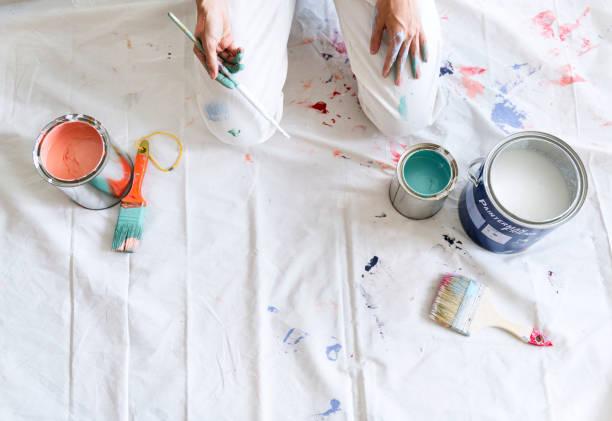Commandité
Why Painters Tarps Are Essential for Indoor and Outdoor Painting

When starting any painting project—whether a small room refresh or a large exterior overhaul—one crucial tool often overlooked is the painters tarp. ***gned specifically to protect floors, furniture, landscapes, and work areas from paint drips, dust, and spills, painters tarps are a painter’s best ally. These heavy-duty coverings not only safeguard your property but also help ensure a clean and professional finish.
Let’s dive deep into why tarps are a non-negotiable item for both DIYers and professional painters tackling indoor or outdoor projects.
What Are Painters Tarps and How Do They Work?
Painters tarps, also known as drop cloths, are protective sheets made from canvas, plastic, or blended materials. They serve as barriers to prevent paint from ruining floors, carpets, walls, furniture, and landscaping. Most come in various thicknesses and materials to suit specific surfaces and paint types.
Whether working on a wooden deck, tiling, or carpeting, choosing the right tarp makes cleanup easier, eliminates paint splatter damage, and enhances overall efficiency.
Protecting Interior Floors and Carpets from Paint and Dust
Paint accidents indoors are common, especially when working near flooring or baseboards.
Benefits of using tarps indoors:
-
Prevents paint splashes on hardwood, tile, or vinyl flooring
-
Shields carpets from hard-to-remove stains
-
Offers a slip-resistant surface for safer movement during painting
-
Reduces need for extensive cleaning post-project
Canvas tarps are ideal for interior use because they absorb spills, stay in place, and are reusable.
Keeping Outdoor Surfaces Clean During Exterior Painting
Outdoor painting is affected by unpredictable weather, dust, and difficult-to-reach surfaces. Painters tarps come in handy for shielding outdoor elements that don't need painting.
How tarps support exterior jobs:
-
Covers sidewalks, driveways, and patios from overspray
-
Protects plants, shrubs, and garden areas
-
Minimizes dust and dirt accumulation on freshly painted surfaces
-
Acts as a barrier when using ladders or spraying equipment
Plastic or polyethylene tarps are often used outdoors due to their water-resistant qualities and durability.
Canvas vs. Plastic Tarps – Which Is Right for Your Project?
Not all tarps are made the same. The choice depends on the environment, surface, and extent of coverage required.
Canvas Tarps:
-
Made from woven cotton
-
Durable, reusable, and absorbent
-
Ideal for indoor use and minimal dripping
-
Heavy enough to stay in place
Plastic Tarps:
-
Made from polyethylene or vinyl
-
Waterproof and lightweight
-
Best for outdoor painting or moisture-prone areas
-
May need to be taped down for stability
Choose canvas for detailed brushwork indoors and plastic for protection against rain or outdoor spraying.
Multi-Purpose Use Beyond Painting Tasks
Painters tarps are not limited to paint protection. They offer versatile solutions for multiple use cases on job sites or at home.
Additional uses:
-
Covering furniture during renovations
-
Acting as a dust barrier during demolition
-
Creating temporary partitions or privacy screens
-
Ground cover for tools and ladders
-
Emergency weatherproofing during outdoor projects
This adaptability makes them a staple for anyone doing home improvement or maintenance work.
Enhancing Professionalism and Clean Workspaces
For contractors, cleanliness and professionalism matter to clients. Using painters tarps is a sign of attention to detail.
Why professionals prefer them:
-
Speeds up setup and cleanup
-
Reduces damage complaints
-
Shows respect for the customer’s property
-
Creates a cleaner, safer environment for workers
A tidy job site improves client satisfaction and boosts referrals.
Reusability and Cost-Efficiency for Regular Users
Buying quality tarps is a smart long-term *** for anyone who paints frequently.
Cost-effective benefits include:
-
Can be used for multiple projects
-
Easy to fold and store
-
Washable and long-lasting
-
Cheaper than frequent plastic replacements
A single canvas tarp can last years, while a roll of plastic might be single-use depending on the thickness.
How to Properly Use Painters Tarps for Best Results
To maximize protection and effectiveness, proper usage is key.
Tips for using tarps efficiently:
-
Lay the tarp flat and secure edges with painter’s tape
-
Ensure no wrinkles or folds to avoid tripping
-
Cover furniture completely when painting ceilings
-
Use clips or weights for outdoor use to hold against wind
-
Choose a size that fully covers the area—oversize is better than undersize
A well-laid tarp is the foundation for a stress-free painting experience.
Environmental Considerations: Choosing Eco-Friendly Options
If sustainability is a priority, opt for eco-conscious painting supplies.
Canvas tarps:
-
Reusable and biodegradable
-
Often made from natural fibers
-
Reduce plastic waste from single-use coverings
Plastic tarps:
-
Some are recyclable depending on local facilities
-
Look for brands that offer recyclable or recycled materials
Environmentally friendly painting habits start with the materials used—even something as simple as a tarp can make a difference.
Safe Storage and Maintenance for Long-Term Use
Keeping your painters tarps in good condition ensures you get the best value over time.
Care instructions:
-
Shake off dry paint after use
-
Fold neatly and store in a dry place
-
Wash canvas tarps occasionally depending on use
-
Avoid storing plastic tarps in extreme heat to prevent warping
With minimal care, high-quality tarps can be reused over dozens of projects






